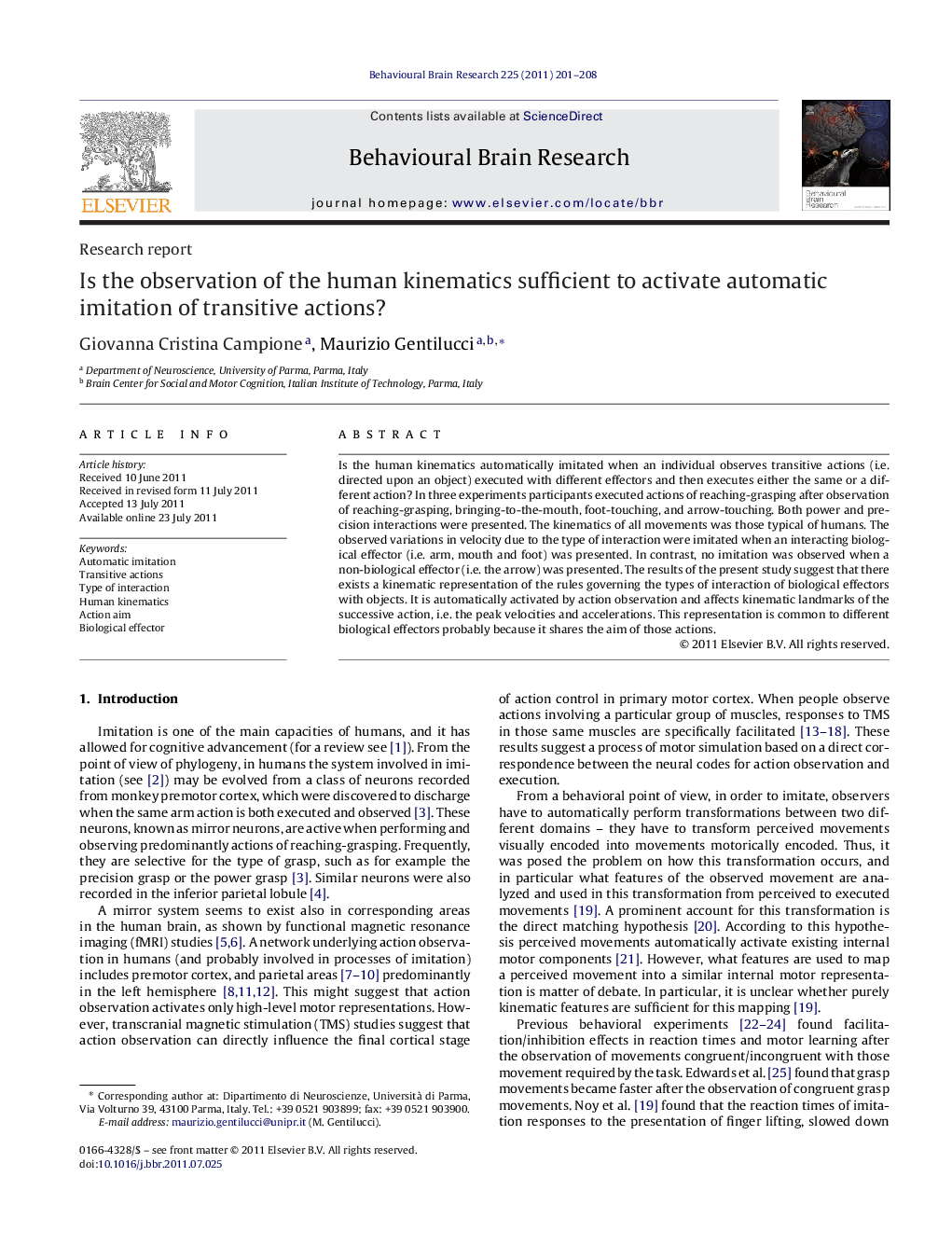| Article ID | Journal | Published Year | Pages | File Type |
|---|---|---|---|---|
| 4313307 | Behavioural Brain Research | 2011 | 8 Pages |
Is the human kinematics automatically imitated when an individual observes transitive actions (i.e. directed upon an object) executed with different effectors and then executes either the same or a different action? In three experiments participants executed actions of reaching-grasping after observation of reaching-grasping, bringing-to-the-mouth, foot-touching, and arrow-touching. Both power and precision interactions were presented. The kinematics of all movements was those typical of humans. The observed variations in velocity due to the type of interaction were imitated when an interacting biological effector (i.e. arm, mouth and foot) was presented. In contrast, no imitation was observed when a non-biological effector (i.e. the arrow) was presented. The results of the present study suggest that there exists a kinematic representation of the rules governing the types of interaction of biological effectors with objects. It is automatically activated by action observation and affects kinematic landmarks of the successive action, i.e. the peak velocities and accelerations. This representation is common to different biological effectors probably because it shares the aim of those actions.
► We studied the effects of observation of transitive actions on reaching-grasping. ► The presented actions were performed by biological and non-biological effectors. ► Precision and power interactions were presented. ► The type of interaction was imitated in presence of biological effectors only. ► A representation common to biological effectors involved in imitation is hypothesized.
